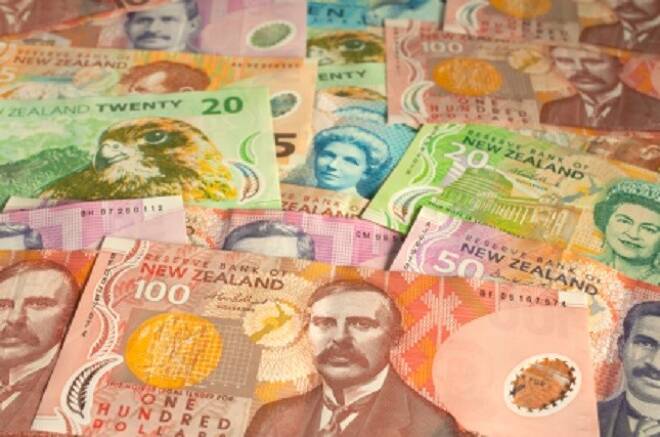Advertisement
Advertisement
NZD/USD Falls on Rising U.S. Yields; Bleak Economic Outlook
By:
A number of fundamental and technical factors hit the New Zealand Dollar last week, pushing the currency to its lowest level since January 3. Some traders
A number of fundamental and technical factors hit the New Zealand Dollar last week, pushing the currency to its lowest level since January 3. Some traders called it the “perfect storm”. These factors included a U.S. Federal Reserve interest rate hike and a weaker outlook for the New Zealand economy.
The NZD/USD finished the week at .6921, down 0.0123 or -1.74%.
Increased trader bets on a Fed rate hike at its policy meeting on March 14 – 15 were the primary price driver. At the end of the week, the chances for a rate hike stood at slightly over 90 percent. This news is helping to drive up U.S. Treasury yields, tightening the spread between U.S. and New Zealand debt instruments. As of Friday, the interest rate yield advantage was only 1 percent on the cash rate and that’s clearly going to narrow if the Fed increases the frequency of its rate hikes this year.
The New Zealand economy is also starting to show signs of cooling off. Last week, it was reported that manufacturing sales dropped in the fourth quarter. Dairy prices also extended their slide at last week’s GlobalDairyTrade (GDT) auction.
Australian Dollar
Last week, the Reserve Bank of Australia left its benchmark cash rate at 1.50 percent and signaled economic conditions were in line with its inflation and growth targets.
The AUD/USD closed the week at .7539, down 0.0056 or -0.74%.
RBA Governor Philip Lowe said in a statement that conditions have improved over the last few months, with business and consumer confidence picking up. He also added that higher commodity prices have boosted Australia’s national income.
Lowe also said that uncertainties remain and China is one of the risks. Domestically, the governor said, underlying inflation will likely remain low “for some time” given the subdued growth in labor costs.
Monthly retail sales were in line with expectations, up 0.4%.
China
Speaking of China, last week, the country reported its first monthly trade deficit in three years, after imports surged and a slow down during the Lunar New Year holidays hit output. However, the news had very little impact since many traders attributed the distortion to the holiday, which often causes businesses to slow down activity, cut operations or close completely.
Japanese Yen
The USD/JPY closed at 114.738, up 0.744 or +0.65%. Rising U.S. Treasury yields helped widen the interest rate differential, making the U.S. Dollar a more attractive investment. Japan also reported that Final GDP for the fourth quarter came in at 0.3%, below the estimate, but slightly above the previous read.
U.S. Dollar
The U.S. Dollar posted a loss for week against a basket of currencies. The index gave back all of its weekly gains on Friday after the release of mixed U.S. jobs data. The Non-Farm Payrolls report for February showed the economy added 235,000 jobs, beating the 196,000 estimate. The unemployment rate came in at 4.7%, in line with expectations. However, average hourly earnings missed the estimate.
The jobs report triggered a sell-off in the U.S. Dollar because it greatly reduced the chances of future rate hikes by the Fed.
June U.S. Dollar Index futures finished the week at 101.107, down 0.326 or -0.32%.
About the Author
James Hyerczykauthor
James Hyerczyk is a U.S. based seasoned technical analyst and educator with over 40 years of experience in market analysis and trading, specializing in chart patterns and price movement. He is the author of two books on technical analysis and has a background in both futures and stock markets.
Advertisement
